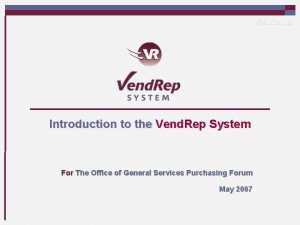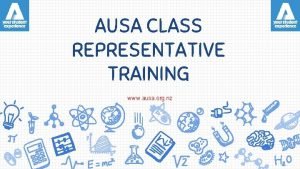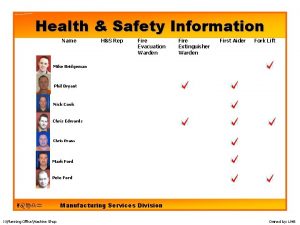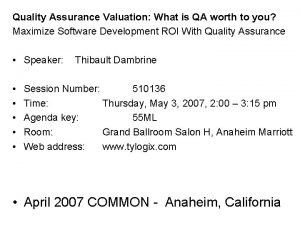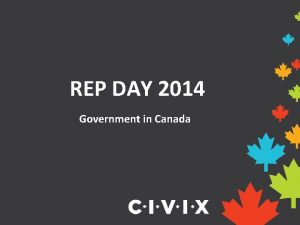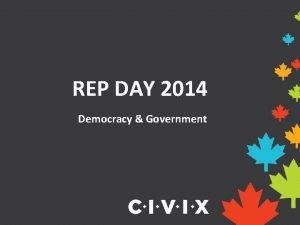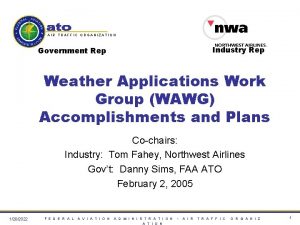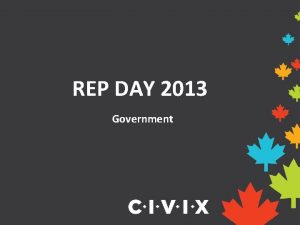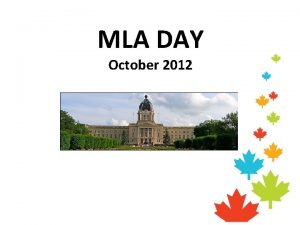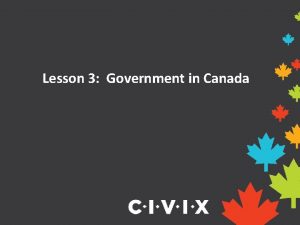REP DAY 2014 Government in Canada Government in









- Slides: 9

REP DAY 2014 Government in Canada

Government in Canada • Canada is a federal state, parliamentary democracy and constitutional monarchy. • A federal state brings together a number of different political communities with a central government (federal) for general purposes and separate local governments (provincial) for local purposes. • As a parliamentary democracy, we elect members to our parliament and legislatures across the country. • As a constitutional monarchy, Canada’s head of state is a hereditary sovereign (queen or king), who reigns in accordance with the Constitution.

Three Levels of Government • Canada is a very large country with lots of people and different needs and interests. • To operate most effectively, the Canadian government is structured into a three level system: federal, provincial and municipal. • Each level has its own arrangement of elected and appointed officials, as well as a unique set of responsibilities.

Federal • The elected representative at the federal level is called a member of parliament (MP). • There are 308 elected MPs across Canada. • They debate and pass laws in the House of Commons in Ottawa. • The leader of the government is called the prime minister. • The Queen is represented by the governor general.

Provincial • The elected representative at the provincial level is called a member of the legislative assembly (MLA), member of provincial parliament (MPP - Ontario), member of the house of assembly (MHA – Newfoundland Labrador), or member of the national assembly (MNA - Quebec), depending on where you live in Canada. • Elected representatives debate and pass laws at the legislative assembly. • The leader of the government is called the premier. • The Queen is represented by the lieutenant governor at the provincial level.

Municipal • The elected representative at the municipal level is called a councillor. • The head of council is called a mayor, reeve or warden. • The size of the council differs from city to town. • Councillors debate and pass legislation in the council chambers (city or town hall/municipal office).

Section 91 -95, Constitution • When they chose a federal form of government, the Canadian Fathers of Confederation assigned particular responsibilities to the different levels of government (Sections 91– 95, Constitution Act). • This division of powers is based on the idea of subsidiarity, meaning, the government that is closest to the issue governs it. • Municipal governments receive their powers from the provinces.

Division of Responsibilities • Federal: National defence, trade, foreign policy, money, health and safety, immigration and citizenship. • Provincial/Territorial: Health care, education, welfare, transportation within the province, justice, energy and the environment. • Municipal: Waste management, water and sewer, policing and protection, cultural facilities and libraries.

Final Thoughts • How does government affect your life? • Why is it important to know who is your elected representative?




